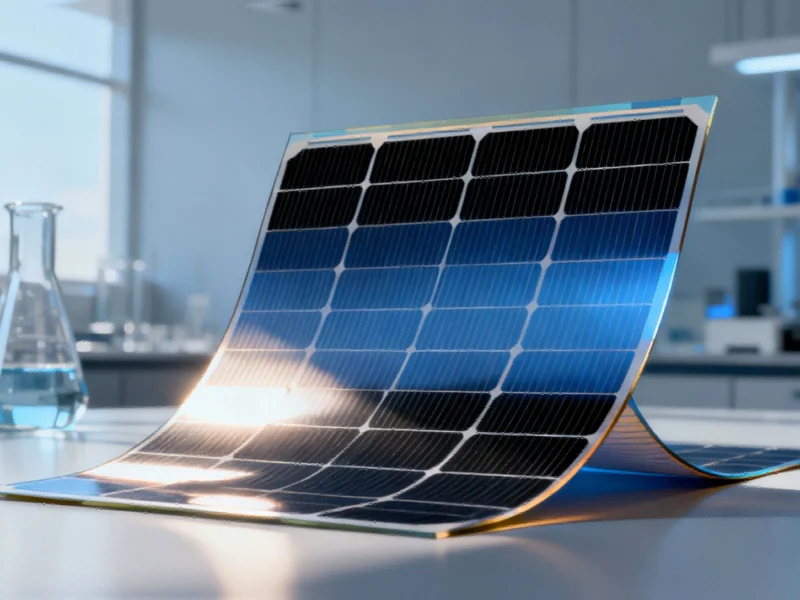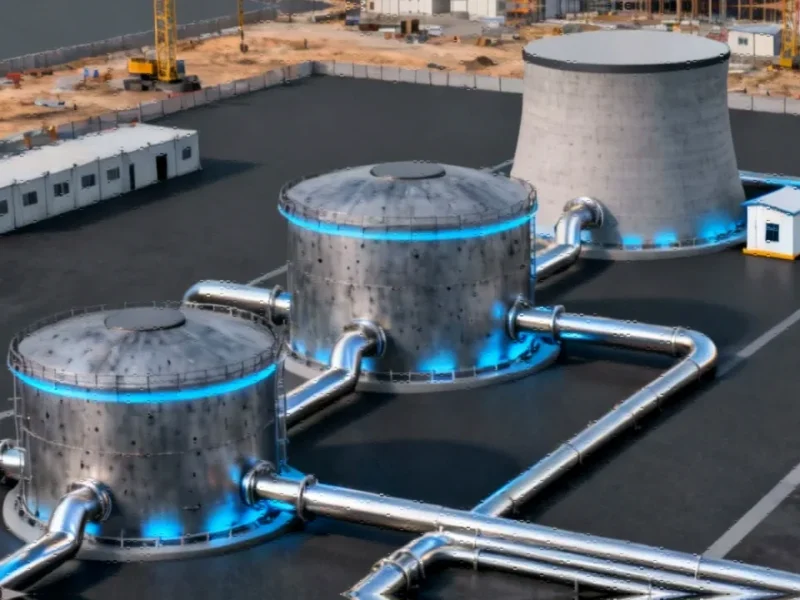TITLE: Flexible Perovskite Solar Technology Reaches Critical Milestone in European Consortium Project
The Horizon Europe PEARL project is transforming solar energy possibilities through groundbreaking advancements in flexible perovskite solar cell technology. This ambitious European consortium has achieved remarkable progress toward developing next-generation solar cells that combine high efficiency with unprecedented flexibility and cost-effectiveness. As European research initiatives continue to demonstrate technological leadership, the PEARL project stands out for its innovative approach to addressing global energy challenges.
Perovskite materials have emerged as a revolutionary alternative to traditional silicon solar cells, offering superior light absorption capabilities, material abundance, and significantly lower production costs. While silicon manufacturing requires energy-intensive processes, perovskite cells can be produced using low-cost roll-to-roll techniques that enable high-throughput manufacturing of lightweight, flexible solar panels. The PEARL project specifically addresses the stability challenges that have previously limited perovskite solar cell commercialization while incorporating cutting-edge carbon electrodes to enhance performance and durability.
Consortium Composition and Strategic Partnerships
The PEARL project brings together ten specialized European partners representing academic institutions, research organizations, and industrial enterprises. This diverse collaboration includes two universities (University of Rome Tor Vergata and University of Applied Sciences Northwestern Switzerland), five research and technology organizations (VTT Technical Research Centre of Finland, TNO, Helmholtz Centre for Materials and Energy, Fraunhofer FEP, and Institute of Chemical Research of Catalonia), and three companies spanning small enterprises to energy giants (Dycotec Materials, Saule Spółka Akcyjna, and Eni S.p.A.).
This strategic partnership mirrors the type of collaborative business initiatives transforming European technology sectors, combining academic research excellence with industrial manufacturing expertise to accelerate technology commercialization.
Technical Breakthroughs and Manufacturing Advancements
At the project’s midpoint, the consortium has delivered impressive technical achievements that position flexible perovskite technology for near-term commercial deployment. Researchers have successfully developed solar cells achieving over 21% efficiency on flexible PET substrates – a significant milestone toward the project’s ultimate 25% efficiency target.
The manufacturing scale-up represents another critical achievement, with partners VTT and TNO advancing roll-to-roll coating, printing, and patterning to larger formats. They have developed flexible minimodules covering 36cm² with 4.5% power conversion efficiency, demonstrating the viability of industrial-scale production. These manufacturing innovations reflect the kind of technical integration breakthroughs happening across the technology sector, where advanced materials meet scalable production methods.
Durability and Environmental Performance
Addressing historical stability concerns with perovskite technology, the consortium has developed protective encapsulation that maintains solar cell performance for over 2,000 hours under demanding damp-heat conditions (85°C temperature and 85% humidity). This durability milestone proves the technology’s readiness for real-world applications across various climates and environments.
Environmental sustainability remains a core focus throughout the project lifecycle. Initial life cycle assessments conducted by the University of Applied Sciences Northwestern Switzerland demonstrate that incorporating carbon electrodes, recycled PET substrates, and green energy can reduce the carbon footprint by more than 50% compared to conventional solar manufacturing. The project has also developed processes to recover valuable materials like lead and cesium from production waste, creating a more circular manufacturing ecosystem.
Market Applications and Future Directions
The PEARL project specifically targets applications where flexibility, lightweight properties, and cost-effectiveness provide significant advantages over conventional solar technology. Building-integrated photovoltaics represents a primary market, where flexible solar cells can be seamlessly incorporated into architectural elements, vehicles, and portable structures. The Internet of Things ecosystem also stands to benefit tremendously, as these solar cells can power distributed sensors and devices without requiring conventional power infrastructure.
Dr. Riikka Suhonen, PEARL Project Coordinator at VTT, emphasized the project’s transformative potential: “These achievements bring us firmly within reach of our 25% target – paving the way to low-cost, high-performance solar modules for applications from building-integrated photovoltaics to the Internet of Things.” This vision aligns with broader technological trends where energy innovation intersects with smart infrastructure development.
Economic and Industrial Implications
The successful development of flexible perovskite solar technology carries significant economic implications for the European renewable energy sector. By establishing pilot-scale production protocols and manufacturing processes, the PEARL consortium is positioning European companies at the forefront of next-generation solar technology. The project’s emphasis on cost-effective roll-to-roll manufacturing methods could dramatically reduce solar energy costs while creating new market opportunities beyond traditional panel installations.
As the project advances into its final phases, researchers will continue optimizing manufacturing processes, testing larger modules in outdoor conditions, and publishing comprehensive life cycle assessment results. The deliverables will include optimized module design specifications, roll-to-roll encapsulation processes, and pilot-scale production protocols that collectively establish Europe’s leadership in flexible photovoltaic technology. This technological progress occurs within an economic landscape where investors are increasingly focused on sustainable technology opportunities with strong growth potential.
The PEARL project represents the type of coordinated research initiative that global economic observers recognize as crucial for addressing both energy and environmental challenges while driving industrial competitiveness. As the consortium continues its work, the technology demonstrates potential to transform how we generate and integrate solar power across countless applications, from smart buildings to connected devices. The project’s combination of material science innovation, manufacturing scalability, and environmental responsibility positions flexible perovskite solar technology as a cornerstone of tomorrow’s renewable energy infrastructure, much like how other technology sectors are integrating advanced functionality into everyday applications.
The PEARL project has received funding from the European Union’s Horizon Europe research and innovation programme under grant agreement no. 101122283, with additional support from UK Research and Innovation under the UK government’s Horizon Europe funding Guarantee and the Swiss State Secretariat for Education, Research and Innovation.
Based on reporting by {‘uri’: ‘innovationnewsnetwork.com’, ‘dataType’: ‘news’, ‘title’: ‘Innovation News Network’, ‘description’: ”, ‘location’: None, ‘ranking’: {‘importanceRank’: 1000000}}. This article aggregates information from publicly available sources. All trademarks and copyrights belong to their respective owners.



